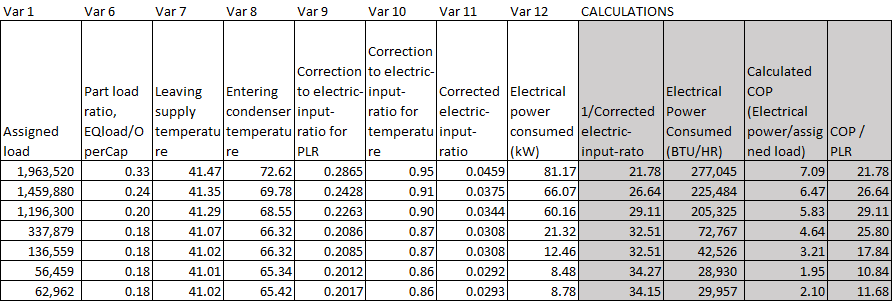This has to do with the specifics of the formula used by DOE2/eQUEST to calculate power. The "Corrected electric-input-ratio" is
$$ EIR\text{-}FT \times EIR\text{-}FPLR \times ELEC\text{-}INPUT\text{-}RATIO $$
where $ ELEC\text{-}INPUT\text{-}RATIO $ is the nominal electric input ratio. The tricky thing is that the part load ratio is already accounted for in the $ EIR\text{-}FPLR$ term. The formula for power is
$$ CAPACITY\text{-}FT \times CAPACITY \times EIR\text{-}FT \times EIR\text{-}PLR \times ELEC\text{-}INPUT\text{-}RATIO / 3412 $$
where $CAPACITY$ is the nominal capacity in Btu/hr. So the "Corrected electric-input-ratio" can also be calculated as the current power consumption (convert to Btu/hr) divided by the operating capacity, not as the power divided by the current load as you would think. Again, this just has to do with the way the formula works out and the fact that the $EIR\text{-}FPLR$ curve accounts for the part load ratio.






